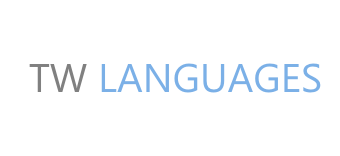Best SEO Translation and Localisation Strategies for International Audiences
SEO translation and localisation are essential strategies for businesses that want to reach international audiences. SEO translation involves translating website content into multiple languages in a way that optimises it for search engines in those languages. Localisation goes a step further by adapting the content to the local culture and customs.
By implementing effective SEO translation and localisation strategies, businesses can improve their visibility in search results, attract more visitors from international markets, and boost their chances of success in global ventures.
Here are some of the benefits of SEO translation and localisation:
- Improve search engine visibility: When your website content is translated and localised, it becomes more visible to search engines in the target countries. This means that your website is more likely to appear in search results when people in those countries search for keywords related to your business.
- Attract more visitors from international markets: By making your website content accessible to people in multiple languages, you can attract more visitors from international markets. This can help you to expand your reach and grow your business.
- Boost brand awareness: When your website content is translated and localised, it can help to boost brand awareness in the target countries. This is because your content will be more relevant and appealing to people in those countries.
- Increase sales: By improving your search engine visibility and attracting more visitors from international markets, you can also increase sales. This is because more people will be able to find your website and learn about your products or services.
If you are looking to expand your business to international markets, SEO translation and localisation are essential strategies that you should consider. By implementing these strategies, you can improve your chances of success in global ventures.
Here are some of the best practices for SEO translation and localisation:
- Use native speakers: When translating your website content, it is important to use native speakers of the target language. This will ensure that the translation is accurate and natural-sounding.
- Do keyword research: When translating your website content, it is important to do keyword research to find the right keywords to use in the target language. This will help you to optimise your content for search engines in those languages.
- Optimise your title tags and meta descriptions: Your title tags and meta descriptions are important for search engine optimisation. When translating these elements, make sure to use relevant keywords and phrases that people in the target countries are likely to search for.
- Localise your content: In addition to translating your content, it is also important to localise it. This means adapting the content to the local culture and customs. This can involve things like changing the currency, date format, and time zone, as well as using local terminology and references.
By following these best practices, you can implement effective SEO translation and localisation strategies that will help you to reach international audiences and grow your business.
Understanding SEO Translation and Localisation
SEO translation and localisation are two closely related concepts that are often used interchangeably. However, there is a subtle difference between the two.
- SEO translation is the process of translating website content into multiple languages in a way that optimises it for search engines in those languages. This includes using the right keywords, phrases, and grammar to ensure that your content is found by people who are searching for it online.
- Localisation goes a step further by adapting the content to the local culture and customs. This includes things like changing the currency, date format, and time zone, as well as using local terminology and references.
Both SEO translation and localisation are important for businesses that want to reach international audiences. However, localisation is especially important for businesses that want to build relationships and trust with customers in the target market.
Here are some additional things to consider when implementing SEO translation and localisation strategies:
- Use a translation management system (TMS): A TMS can help you to streamline the translation process and ensure that your content is translated consistently across all languages.
- Work with a reputable translation agency: A reputable translation agency will have a team of experienced translators who can help you to translate your content accurately and effectively.
- Track your results: It is important to track the results of your SEO translation and localisation strategies so that you can see what is working and what is not. This will help you to optimise your strategies over time.
By following these tips, you can ensure that your SEO translation and localisation strategies are successful.
Cultural Adaptation of Content
To successfully engage international audiences, it is essential to adapt content to the target market’s culture and preferences. Literal translations may not effectively resonate with the audience, leading to a loss of engagement and reduced search visibility. By understanding cultural nuances, local traditions, and preferences, businesses can tailor content to the target audience, ensuring it feels natural and relatable. This cultural adaptation instils trust and enhances the user experience, leading to higher conversion rates and improved SEO performance.
Localising URLs and Metadata
Localisation is not limited to translating the visible content; it also extends to technical elements like URLs and metadata. Localising these components ensures that they align with the target market’s language and search behaviour. Optimising URLs and metadata with relevant keywords in the target language enhances search engine visibility and click-through rates. Furthermore, it signals to search engines that the website is relevant to the local audience, improving organic rankings.
Considering Technical Considerations
In addition to content localisation, businesses must consider technical aspects during SEO translation and localisation. Ensuring website compatibility for different languages and character sets is crucial. Implementing hreflang tags, which indicate to search engines the language and country targeting of each page, is essential for accurate indexing and visibility in local search results. A technically sound website with clear site structure and intuitive navigation helps search engines understand and rank the site appropriately.
Collaborating with Local SEO Experts
When expanding into foreign markets, collaborating with local SEO experts can be highly beneficial. Local SEO professionals possess invaluable knowledge about the target market’s search habits, trending keywords, and cultural expectations. By partnering with them, businesses can gain insights to refine their SEO translation and localisation strategies, ensuring the highest level of relevancy and effectiveness.
Monitoring and Optimising Performance
SEO translation and localisation are ongoing processes. Monitoring and analysing the performance of translated and localised content is key to optimising strategies. Regularly reviewing website analytics, keyword rankings, and user feedback provides valuable insights into the effectiveness of implemented SEO translation and localisation practices. Any necessary adjustments can be made promptly to improve search engine visibility, user experience, and ultimately, return on investment.
Conclusion
In today’s competitive global landscape, implementing effective SEO translation and localisation strategies is essential to connect with international audiences. By conducting thorough keyword research, culturally adapting content, localising URLs and metadata, considering technical aspects, collaborating with local SEO experts, and continuously monitoring and optimising performance, businesses can maximise their reach and visibility in international markets. By investing in comprehensive SEO translation and localisation, businesses can ensure their content is optimally tailored to the target market, resulting in increased organic traffic, higher conversions, and sustainable growth.












